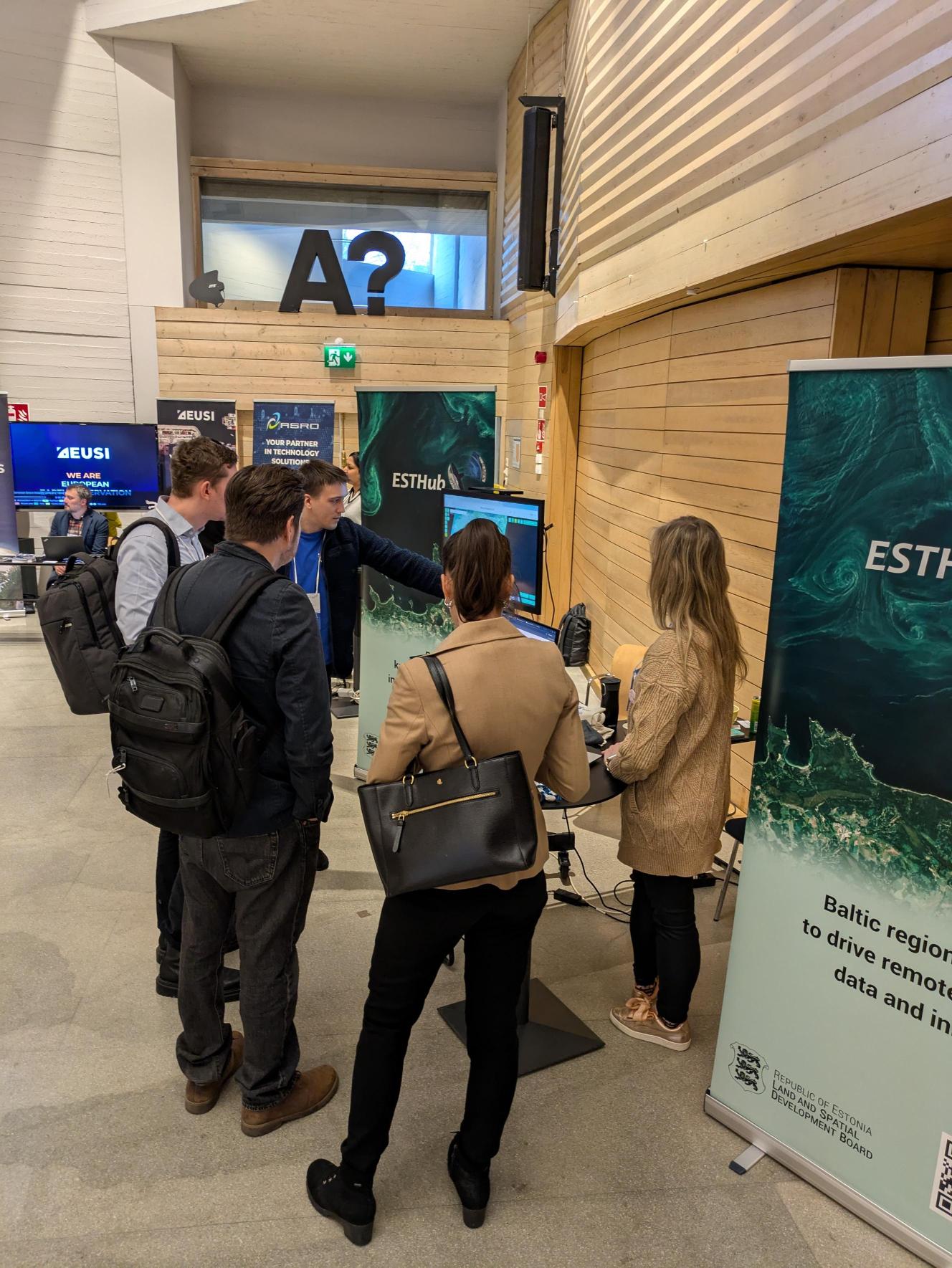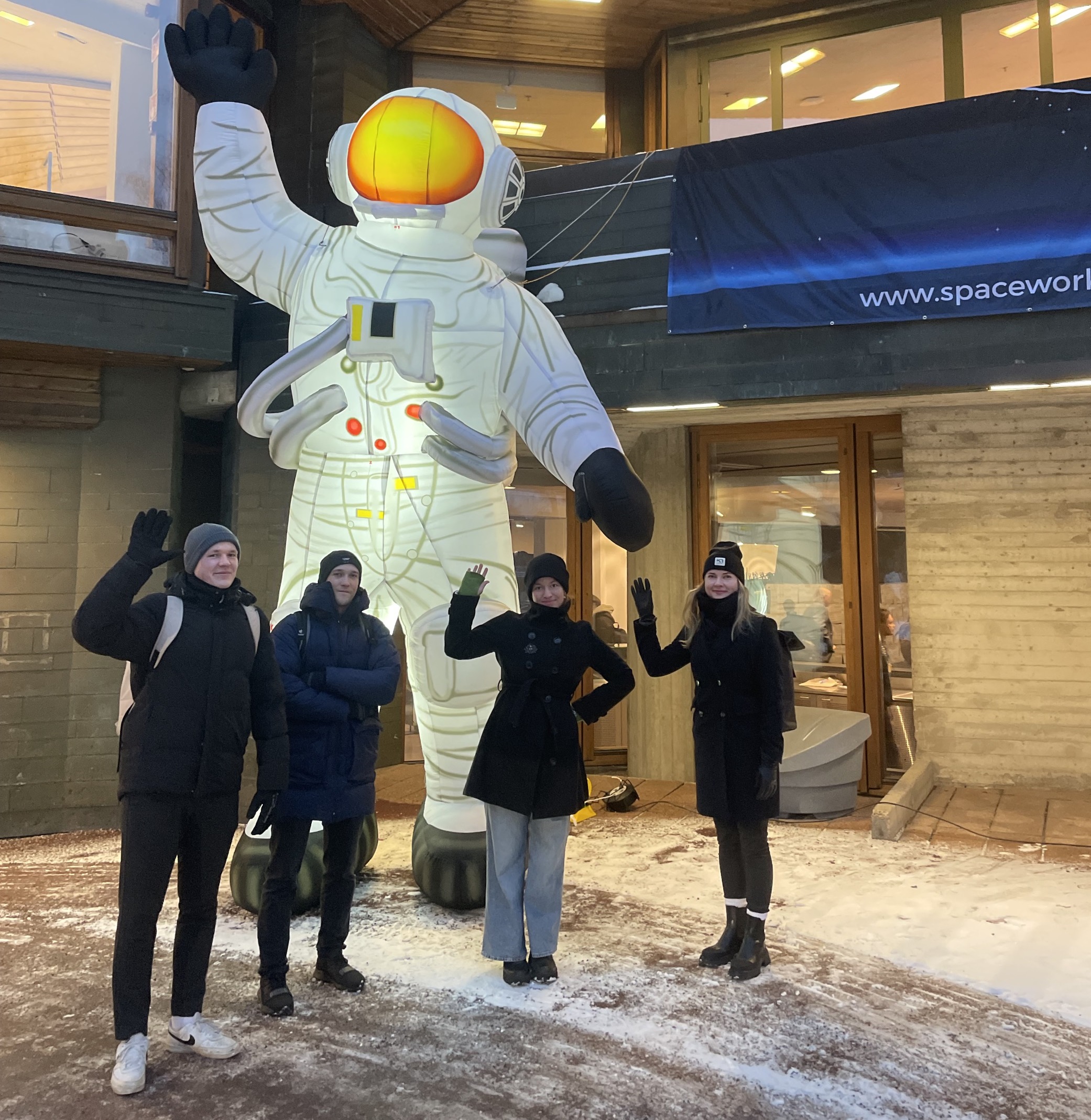ESTHub at the Winter Satellite Workshop
The Winter Satellite Workshop took place from January 21 to 23 at Dipoli in Otaniemi, bringing together participants from across the Nordic and Baltic regions. This largest New Space event in the region provided a unique platform for sharing knowledge, presenting innovative ideas, and fostering collaboration networks.
Organized by Aalto University, the workshop featured prominent speakers, including scientists, engineers, and entrepreneurs, who addressed future trends in the space sector, technological breakthroughs, and the importance of international cooperation. In addition to the presentations, the exhibition area garnered significant attention, showcasing state-of-the-art satellite technologies and solutions.
ESTHub team from the Estonian Land and Spatial Development Board presented a wide range of satellite data applications and tools. We demonstrated Satiladu, an environment that simplifies access to and analysis of satellite data, and Xcube, a tool enabling the creation of time series and data visualizations. We also introduced the Calvalus platform, which offers an efficient solution for processing large datasets. Additionally, we highlighted inspiring use cases for satellite data applications in environmental monitoring, agriculture, and urban planning, drawing on both our own examples and the experiences of our collaborators.


The ESTHub exhibit attracted significant interest, bringing a diverse audience to our booth — scientists, engineers, software and hardware developers, cybersecurity experts, and different niche product creators. Lively discussions and insightful questions from visitors underscored the growing importance of satellite data across numerous scientific and technological domains. This feedback affirmed that space technology has the potential to provide practical solutions while also inspiring future innovations.
Young people are highly interested in technology development, especially in creating satellites and developing integrated solutions. This reflects their creativity, curiosity, and ambitions. The practical use of satellite data, such as for analyzing environmental issues, was not widely familiar to the young people attending the conference, as indicated by feedback from interactions with them. The reason may lie in the specific characteristics of our region, where environmental changes occur slowly and may not be immediately noticeable. Estonia’s nature and cities develop gradually, which may make the potential of satellite data seem abstract and distant. Perhaps what is more captivating is something fast, unexpected, and drastic – it’s hard to say, but it’s definitely something that could be explored further. It may also be difficult to connect visual satellite images to real-life changes and understand the actual impact of those changes.
While satellite images show environmental changes, it is often hard to understand how to practically apply this data, especially when the changes are not directly perceptible in daily life. Seeing the connections between satellite imagery visuals and one’s own living environment, work, hobbies, or daily activities might not be immediately grasped or intuitive. Therefore, it is sometimes necessary to guide or provide inspiring real-life examples that help bridge the gap between science and everyday life. Whether it is robotics, smart city solutions, or climate change monitoring, sharing examples of data applications could inspire young people to understand how science can address specific problems.
In Estonia, awareness of environmental issues has increased, but can we develop the use of data to solve these problems at the same pace? One of the major challenges is to create a bridge between science, new technology, and practical applications, so that satellite data does not remain merely a theoretical resource, but starts playing a concrete role in decision-making that shapes our future.
The ESTHub team, analyzing the event, points out that remote sensing presentations could be more dynamic and practical. In engaging a broader audience, a certain level of simplification is necessary, finding the right balance between scientific accuracy and the level of generalization so that the core message is clear and understandable. The style of the speakers and the structure of the presentations play a key role here. It was positive to see that discussions arose between presentations, allowing participants to engage directly with experts and ask questions.
Overall, the event was excellent, with an inspiring and positive atmosphere. We made new contacts and exchanged ideas that could lead to new cooperation opportunities and innovations. However, there remains the question of how we could better engage and inspire a wider audience, especially younger audiences or those who are not specialists in the field. Discussions should not remain confined to narrow scientific circles, but should extend more broadly to anyone who may have an interest in new scientific fields and technologies.